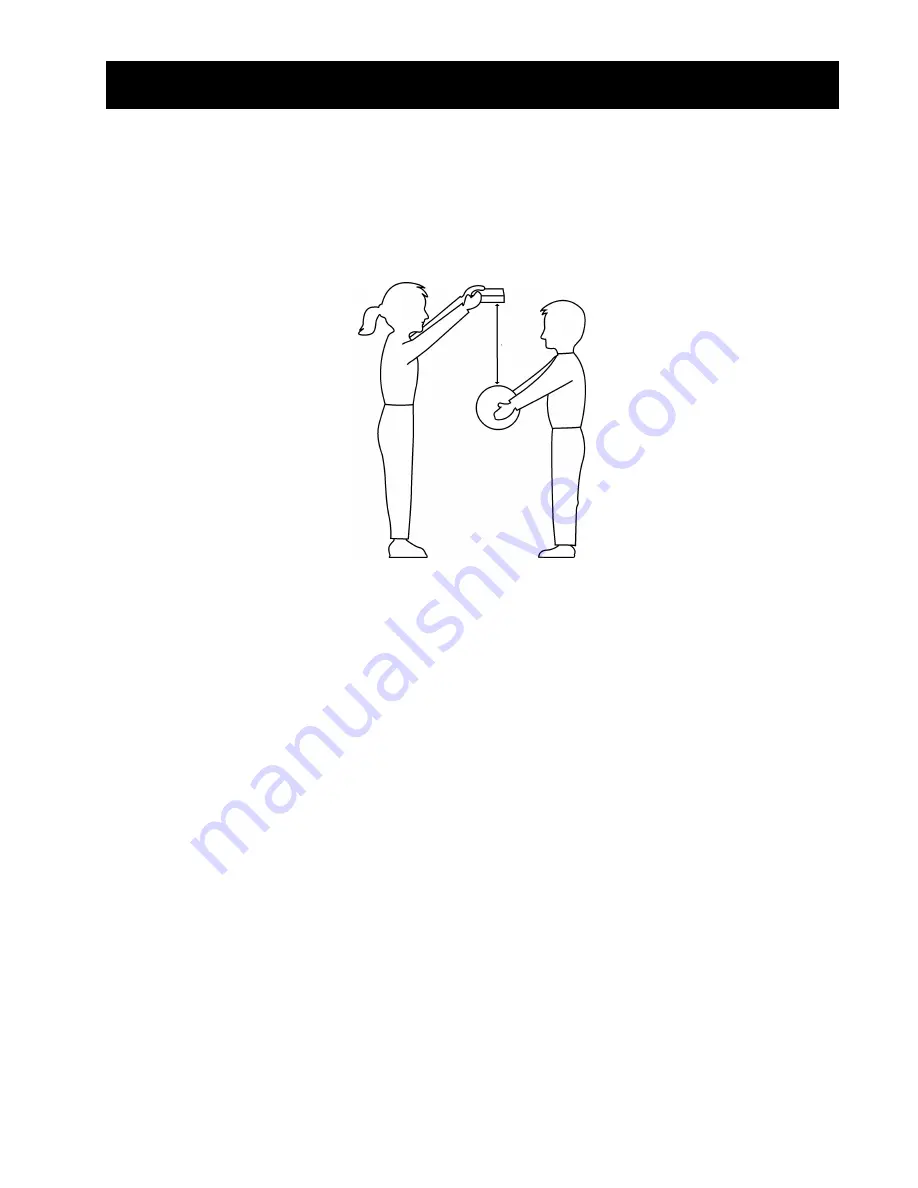
©
1997,
2004,
2006
T
EXAS
I
NSTRUMENTS
I
NCORPORATED
G
ETTING
S
TARTED WITH THE
CBR 2™
S
ONIC
M
OTION
D
ETECTOR
25
Activity 4—Bouncing Ball
Parabolic
Data collection
Ê
Begin with a test bounce. Drop the ball (do not throw it).
Hints:
Position the
CBR 2™
motion detector at least 0.5 meters (about 1.5 feet) above
the height of the highest bounce. Hold the sensor directly over the ball and make sure
that there is nothing in the
clear zone
(see page 7).
Ë
Run the EasyData application or RANGER program.
Ì
EasyData Users: From the
Setup
menu, choose
4:Ball Bounce
, and then select
Start
(press
q
). General instructions are displayed. Ball Bounce automatically takes care of the
settings.
RANGER Users: From the Main Menu, choose 3: Applications. Choose the distance
units, then choose 3:Ball Bounce.
Í
Have one person hold the calculator and
CBR 2™
motion detector, while another
person holds the ball beneath the sensor.
Î
Select
Start
(press
q
). When the
CBR 2™
motion detector begins clicking, release the
ball, and then step back. (If the ball bounces to the side, move to keep the
CBR 2™
motion detector directly above the ball, but be careful
not
to change the height of the
CBR 2™
motion detector.)
Ï
When the clicking stops, the collected data is transferred to the calculator and a plot of
distance vs. time is displayed.
Ð
If the plot doesn’t look good, select
Main
,
Start
,
Start
to repeat the sample. Study the
plot.
Answer questions 1 and 2 on the activity sheet.
Ñ
Observe
that
Ball Bounce
automatically flipped the distance data.
Answer questions 3
and 4
.






























